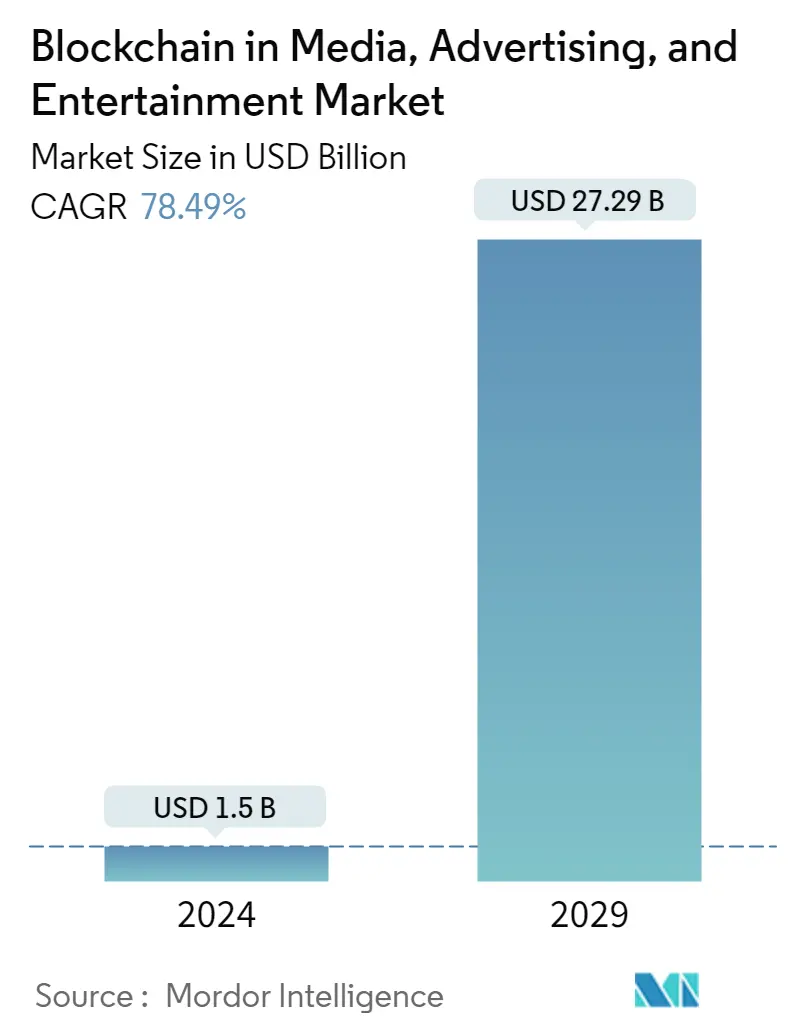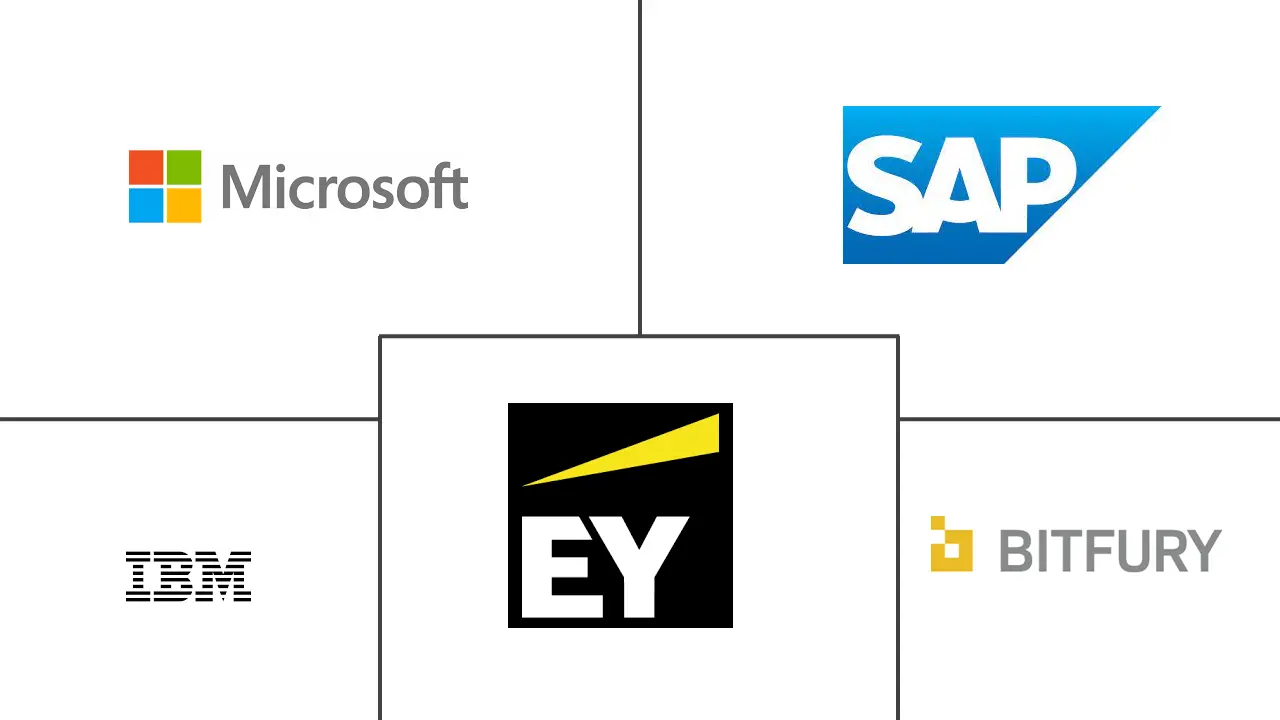Market Size of Blockchain in Media, Advertising, and Entertainment Industry

| Study Period | 2021 - 2029 |
| Market Size (2024) | USD 1.50 Billion |
| Market Size (2029) | USD 27.29 Billion |
| CAGR (2024 - 2029) | 78.49 % |
| Fastest Growing Market | Asia-Pacific |
| Largest Market | North America |
Major Players
*Disclaimer: Major Players sorted in no particular order |
Need a report that reflects how COVID-19 has impacted this market and its growth?
Blockchain in Media, Advertisement and Entertainment Market Analysis
The Blockchain in Media, Advertising, and Entertainment Market size is estimated at USD 1.5 billion in 2024, and is expected to reach USD 27.29 billion by 2029, growing at a CAGR of 78.49% during the forecast period (2024-2029).
Blockchain is disrupting not only the existing business models but is also enabling the development of new business models, especially in the media industry. Digital technologies are substantially transforming the global media and entertainment industries, especially in content production and distribution, with blockchain being the most prominent technological disruptor.
- The need for blockchain in media and entertainment is increasing owing to the subsequent commoditization of content and widespread piracy of intellectual property (IP). The increasing need for eliminating intermediaries between content creators and end-users, the growing demand for secure and faster transactions, and the growing instances of data piracy in the media and entertainment industries are some key factors driving the market.
- Further, media users are accustomed to having free access to a wide variety of content, as the media and entertainment industry is a contract-based business that places a premium on protecting intellectual property. Also, all media segments have suffered significantly from digitization since content can be copied and distributed quickly without losing quality. This is because digital rights management systems still need to reduce copyright infringements.
- With the advent of blockchain, this industry structure could change significantly. Blockchain technology permits bypassing content aggregators, platform providers, and royalty collection associations to a large extent. Thus, market power shifts to the copyright owners. Blockchain technology can increase profits for content creators and media companies by providing real-time consumption-based pricing against assets with an immutable state and digital identity. This solution reduces transaction costs by 40-80%, thus making payment applications the leading segment amongst others.
- After the pandemic, people across the globe are interested in attending physical entertainment events such as music and movie festivals and sports, along with the significant adoption of digitalization. NFT penetration is analyzed to contribute to the market growth rate.
- For instance, in August this year, Ticketmaster, a Live Nation subsidiary, recently announced non fungible tokens (NFTs) tickets for event organizers minted on its blockchain, according to Flow, a digital engagement layer-1 blockchain established by Dapper Labs. The NFT tickets' main use will be for their archival value. But in addition to serving as souvenirs, they can be used as evidence of attendance at prominent concerts.
- Additionally, through Ticketmaster, more than 5 million NFTs have been created on the Flow blockchain. Meta revealed in August that Instagram now supports NFT in more than 100 nations. All NFT collectibles shared on Instagram are created on the Flow blockchain. Additionally, Meta introduced a new NFT connection through users' digital wallets on Facebook.
- This technology eliminates the need for intermediaries and reduces administrative costs and time for providers and payers. However, lack of standardization hinders the market's growth to a certain extent. Also, the process of implementing new technology is expensive and time-consuming, which restrains market growth.
